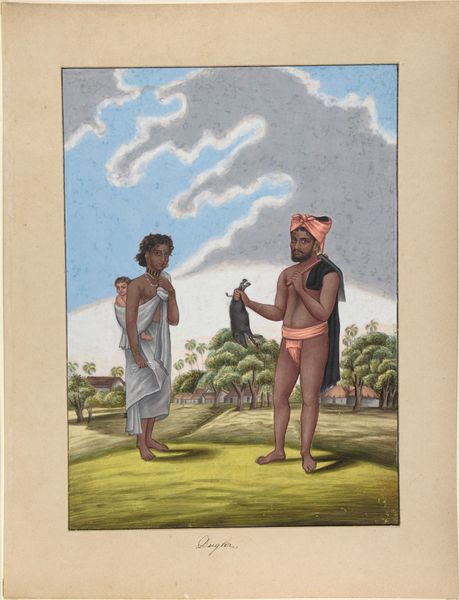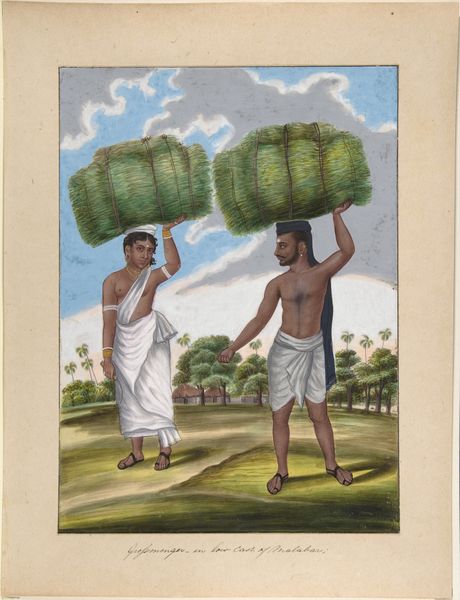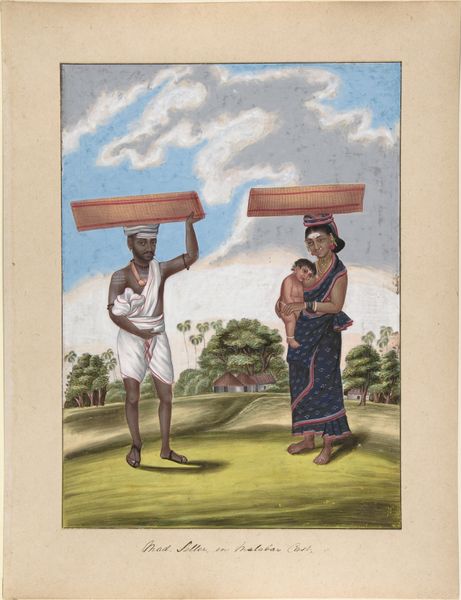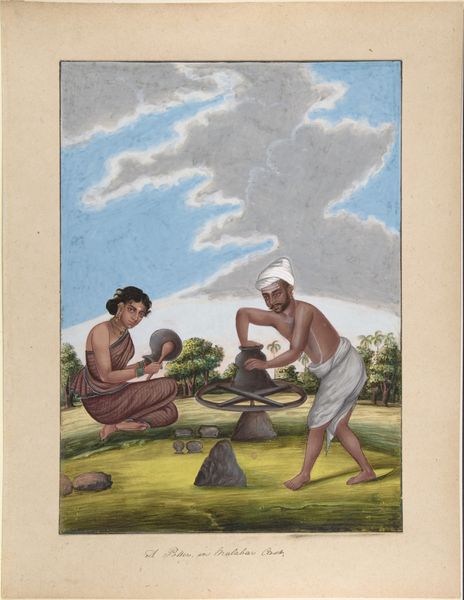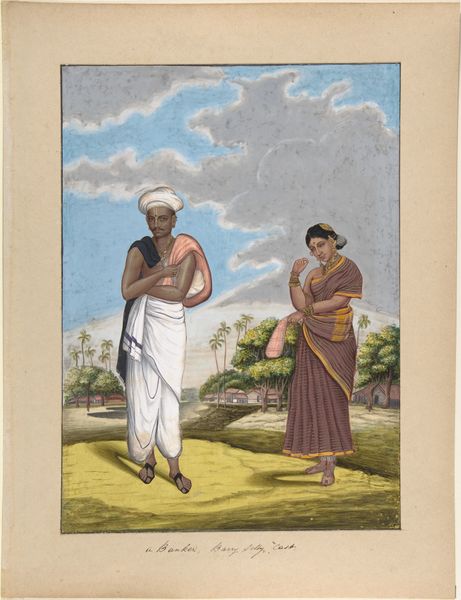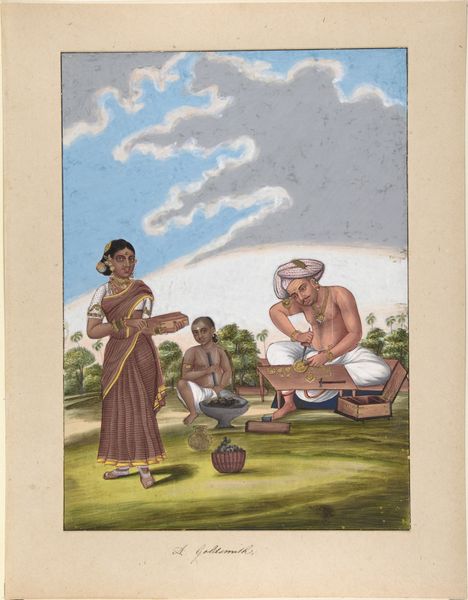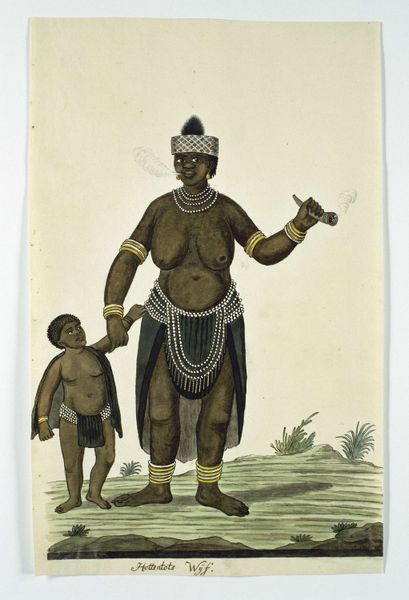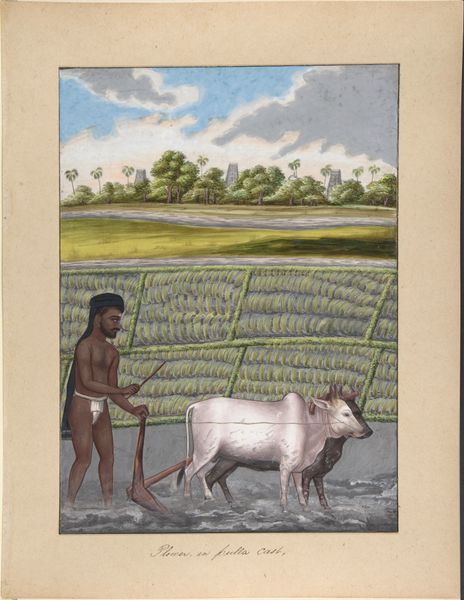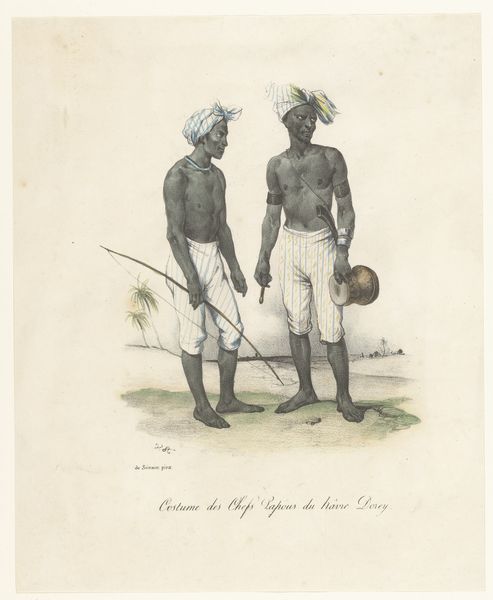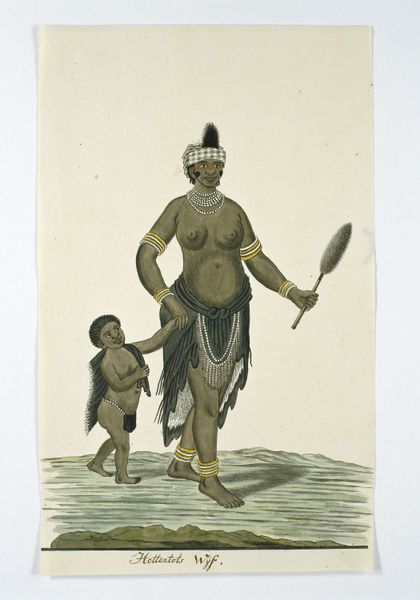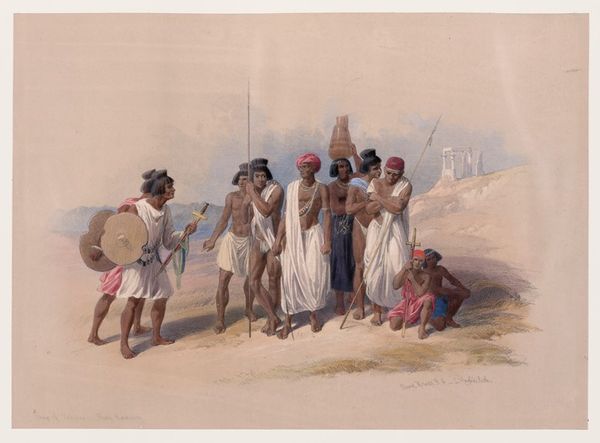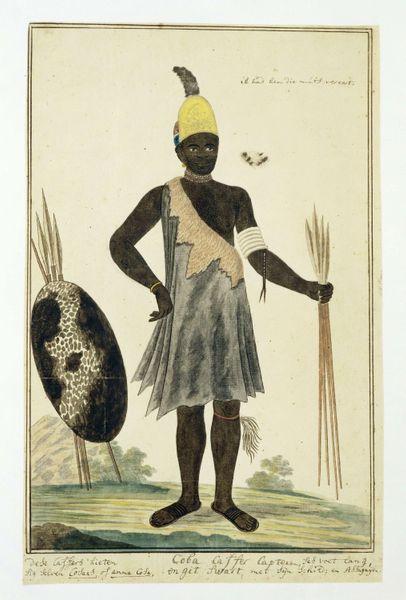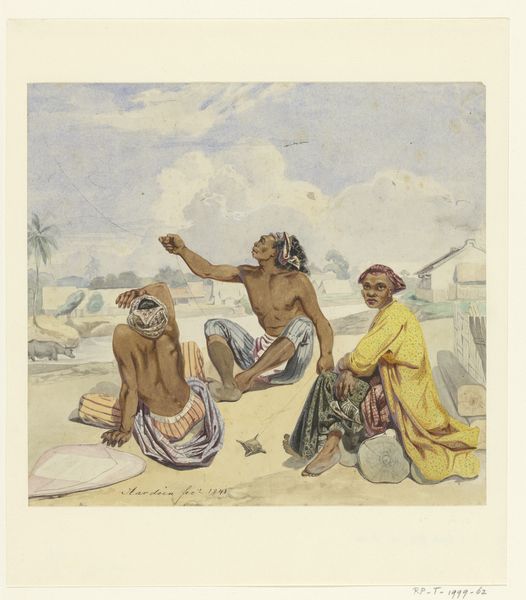
Woodmonger in Culla Caste, from Indian Trades and Castes 1835 - 1845
0:00
0:00
watercolor
#
portrait
#
water colours
#
figuration
#
watercolor
#
coloured pencil
#
orientalism
#
men
#
watercolour illustration
#
watercolor
Dimensions: sheet: 14 3/8 x 10 3/8 in. (36.5 x 26.4 cm) mount: 18 1/4 x 14 1/4 in. (46.4 x 36.2 cm)
Copyright: Public Domain
Curator: Let's turn our attention to a watercolour titled "Woodmonger in Culla Caste, from Indian Trades and Castes," created sometime between 1835 and 1845. The artist is, unfortunately, anonymous. Editor: There’s something immediately striking about the composition, isn’t there? It's that sheer physicality – the man and woman with these enormous bundles of sticks balanced precariously on their heads, it’s a visual poem about labor. Curator: Exactly. It draws attention to the physical effort inherent in everyday life. We see the labour, and perhaps start thinking about who this was made for, who consumed it, what was their relationship with manual labour? It encourages us to look at the production of art as a commodity reflecting social dynamics. Editor: It feels so… distant, but intimate at the same time. Like peering through a keyhole. I can almost feel the weight of the wood, smell the earthiness. The bright colours contrast strangely with the inherent toil. What I mean is, they seem quite dignified in this depiction. Curator: The "Indian Trades and Castes" series to which this watercolour belongs was indeed a study, almost ethnographic in nature, portraying various professions and social groups in India during the colonial period. There's a tension here, as with so many images made by anonymous artists under colonialism, it's hard to untangle what's ‘observation’ from colonial documentation that served power. Editor: Makes you wonder about the artist's intention, doesn’t it? Were they trying to document, to exoticize, to simply capture a moment? There’s a kind of gentle empathy here I think, at least I hope so. It prompts us to really think about those nameless, faceless figures in history, those who laboured so others could live. Curator: The focus on the materials these people worked with highlights the way material culture is interwoven with social structure, right down to who has access to basic needs. Even a simple watercolor opens up layers of understanding about material existence. Editor: In the end, perhaps it’s the weight of those wooden bundles that linger, long after you walk away from the picture, don’t you think? Curator: Yes, both a material weight and the historical weight it represents. Food for thought.
Comments
No comments
Be the first to comment and join the conversation on the ultimate creative platform.
